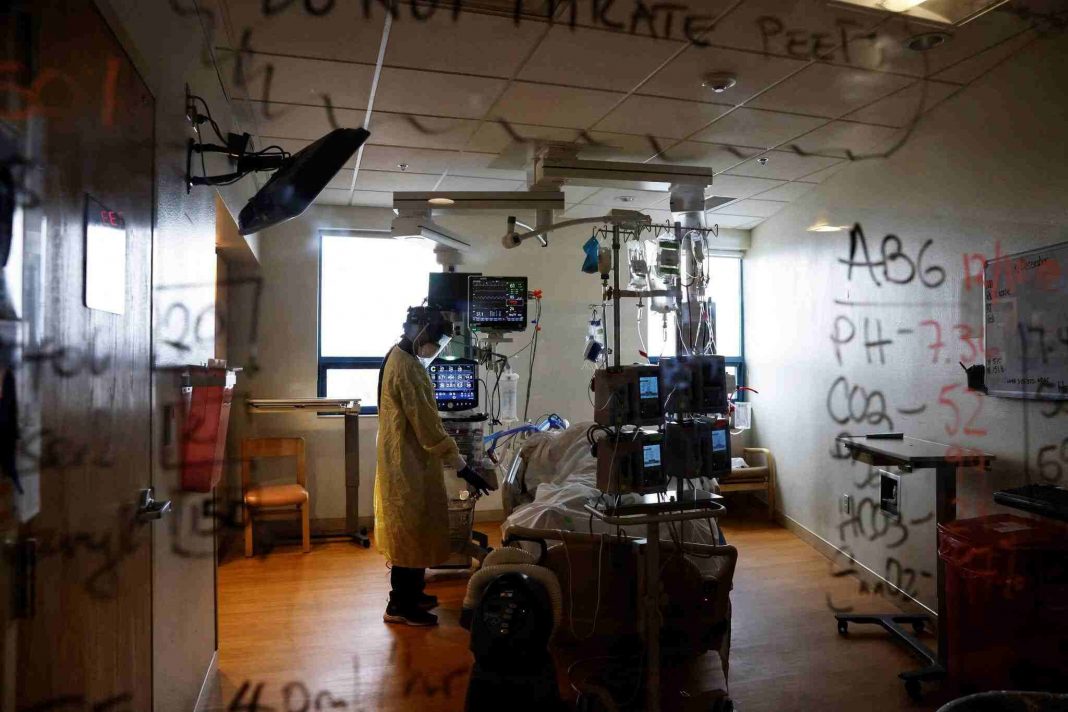Doctors at hospitals around the country are taking notice: this wave of Covid seems to be different from the last one, according to their observations.
Medical professionals are fatigued once again as they deal with the extremely infectious Omicron version, and they are also being infected with the virus themselves. Furthermore, the number of people entering hospitals with the variation is skyrocketing to unprecedented heights, clogging up desperately needed beds, delaying non-emergency surgeries, and increasing the likelihood that susceptible uninfected individuals may get the virus in the process.
In Omicron hot regions from New York to Florida to Texas, however, a lesser number of those patients end up in critical care units or need mechanical breathing, according to the clinicians who spoke with us. And many of those who are admitted to hospitals in New York for various reasons later test positive for the virus (about 50 to 65 percent of admissions in select New York hospitals).
According to Dr. Rahul Sharma, emergency physician in chief at NewYork-Presbyterian/Weill Cornell Hospital, “we are noticing an increase in the number of hospitalizations.” However, he claims that the intensity of the sickness seems to be different from past rounds. “We’re not sending as many patients to the intensive care unit, we’re not intubating as many patients, and in fact, the vast majority of our patients that come to the emergency room and test positive are actually released,” says the physician.
Despite the fact that it is still too early to make definitive predictions, the shift in hospital patterns is consistent with emerging evidence that Omicron is a variant with inherently milder effects than those that have come before it, and is less likely to infect the lungs, where it can cause serious disease. It’s also possible that the lower number of severe cases is occurring because Omicron is infecting more individuals who have some preexisting immunity, whether through past infection or immunisation, when compared to earlier versions. According to experts, the great majority of Omicron patients in intensive care units are either unvaccinated or have extremely damaged immune systems.
Hospitals are under tremendous pressure as a result of a lack of qualified employees. Hospitalizations in New York City have surpassed the high point of the previous winter’s rise. In addition, Maryland Governor Larry Hogan issued a state of emergency on Tuesday, citing the fact that the state had more hospitalised Covid-19 patients at the time than at any other point throughout the outbreak.
According to specialists, the number of I.C.U. patients is a lagging sign that will likely increase in the following weeks. Furthermore, several jurisdictions are still dealing with a backlog of hospitalizations caused by Delta, a prior strain of the virus that may be more severe than the current version.
Despite this, various stories indicate that Omicron is a unique adversary in comparison to the variations that came before it. And, according to physicians, the issues hospitals are facing — at least for the time being — are less about stockpiling equipment and more about personnel and contagion.
Several specialists expressed concern over reports in early December suggesting South African hospitals were only dealing with a small number of severe Omicron cases, and they advised that the data should be read with care. South Africa had a relatively youthful population, and a considerable fraction of that population had been infected by prior waves of the virus, resulting in some pre-existing immunity among those who were impacted.
Hospitals in other cities have similarly reported greater incidence of accidental infections in their patient populations. At Jackson Health System facilities in Florida, 53 percent of the 471 patients who had Covid were hospitalised for reasons other than their illness, according to the study. According to Dr. Kelen of Johns Hopkins Medicine in Maryland, 20 percent of patients seeking treatment for non-Covid problems are found to have infections, according to the hospital’s website.
Many hospitals were already experiencing personnel shortages prior to the introduction of Omicron Healthcare. It has become increasingly difficult to provide treatment even when hospital beds are available due to the outflow of health care professionals who have left the country during the course of the epidemic.
As Dr. Sharma of NewYork-Presbyterian/Weill Cornell Medical Center points out, the increase of hospitalised Covid cases has coincided with an increase in hospitalizations for other ailments, placing further burden on hospital resources. When the epidemic reached its zenith in 2020, hospital admissions fell as individuals who did not have Covid avoided hospitals.
A little over six weeks have elapsed since the world first heard about Omicron, and hospital staff members are still waiting with bated breath to see how the future weeks will develop.
Dr. Musser said that as of Tuesday morning, Houston Methodist had 630 inpatients with the virus spread among its eight hospitals, the great majority of whom were most likely infected with Omicron. Despite the fact that this amount is lower than the system’s Delta high, when there were between 850 and 900 inpatients who were infected at the same time, the number of new cases is continuing to rise, according to the doctor.

